Kemp Elektroniks Quantum Approach Plug
| Another Black Box? |
|
|
|
March 2011 |
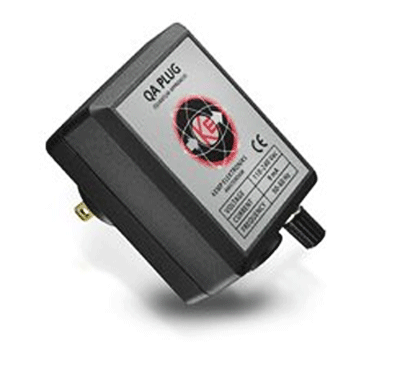
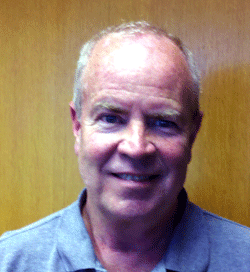 I have always been fascinated by electronic “gizmos”: those little black or silver boxes that are meant to reside in or around our stereo systems, and whose manufacturers promise us amazing improvements. My system is adorned by a great number of these, from Acoustic Revive’s Schumann Resonance generator, to countless Audio Prism Quiet Lines, to Audio Magic’s PulseGen ZX and Ground Disrupter. And luckily, I’ve encountered very few lemons along the way: most of the gizmos I’ve purchased have made at least a subtle positive difference in the sound.
I have always been fascinated by electronic “gizmos”: those little black or silver boxes that are meant to reside in or around our stereo systems, and whose manufacturers promise us amazing improvements. My system is adorned by a great number of these, from Acoustic Revive’s Schumann Resonance generator, to countless Audio Prism Quiet Lines, to Audio Magic’s PulseGen ZX and Ground Disrupter. And luckily, I’ve encountered very few lemons along the way: most of the gizmos I’ve purchased have made at least a subtle positive difference in the sound.
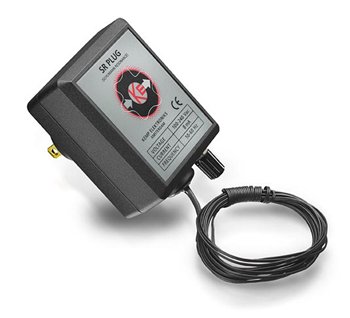
It was a rather costly gizmo that attracted my attention at a recent event held by a local high-end store. The entire Nordost line of products was on display, including their well-regarded cables. But what drew most of my interest were the Quantum QRT QX4 and QX2, joint ventures of Nordost and Quantum Resonance Technology. Without getting too bogged down in technical descriptions, the QRT devices are said to generate a complex pattern of electromagnetic waves that diminish the negative effects of electromagnetic pollution. With a QX4 in parallel with the system’s AC and a QX2 used as a peripheral device, the differences in the system when they were switched on were positive and repeatable. But the prices ($2500 for the QX4 and $1700 for the QX2) seemed a bit high.
Intrigued by what I had heard, I explored the Internet for information
on Quantum Resonance devices, and found the Kemp Elektroniks QA Plug, advertised to do approximately what the Nordost devices do, and selling for one-tenth of a QX4’s retail price. Clement Perry had briefly mentioned that he didn’t care for the sonic effects of the QA Plug in a 2009 Stereo Times review of its sister product, the Kemp Schumann Resonance Plug (here). But, given the low price and my positive experience with the Nordost products, I ordered one anyway.
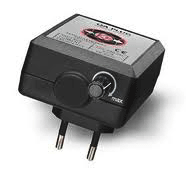
The QA Plug looks like a slightly larger than normal “wall wart” plug, with a small intensity control at the bottom of the enclosure. I plugged the Kemp device into the AC conditioner that powers my system, and after a brief break-in, its effects became apparent. There were two consistent benefits: the first is a reduction in treble sibilance. Female vocals and cymbals are the main beneficiaries of this effect. The second improvement is an increase in the specificity and dimensionality of the instruments and (especially) voices.
Individual elements of the stereo image became easier to “see” and seemed to possess more three-dimensional body, as opposed to the “cardboard cutout” effect. I would characterize these improvements as fairly subtle, but definitely worthwhile. I heard no change in tonal balance or dynamics with the QA Plug inserted, and I left its intensity control at about 75%, as recommended. Changing the intensity seemed to have little effect, unless I turned it below 50%, at which point the benefits of the plug seemed to largely go away.
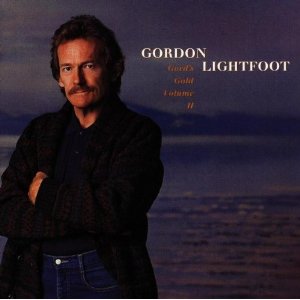 I’ve used Gordon Lightfoot’s “If It Should Please You” from the Gord’s Gold II CD [Warner Bros] as a reference cut for these types of changes for years. Gordon is very close to his microphone, and several of the “s” sounds can sound hissy and almost over-modulated under the wrong circumstances. The addition of the QA Plug added a small but noticeable bit of control to these sounds. In addition, I heard more of the illusion of a body behind Gordon’s voice, as opposed to just a mouth in mid-air.
I’ve used Gordon Lightfoot’s “If It Should Please You” from the Gord’s Gold II CD [Warner Bros] as a reference cut for these types of changes for years. Gordon is very close to his microphone, and several of the “s” sounds can sound hissy and almost over-modulated under the wrong circumstances. The addition of the QA Plug added a small but noticeable bit of control to these sounds. In addition, I heard more of the illusion of a body behind Gordon’s voice, as opposed to just a mouth in mid-air.
A recent impulse CD purchase, Richard Rodgers’ great music from the 1950’s TV show Victory at Sea(Robert Russell Bennett conducting the RCA Victor Symphony) [RCA Victor], proved another good indicator of the benefits of the QA Plug: the already rich violin sound acquired more depth and dimension, and it became easier to concentrate on the texture and body of the violins, both individually and collectively. Why? Who knows, but perhaps the sub-audible electromagnetic waves generated by the Kemp device are somehow consonant with elements of the music, making the listening experience more pleasant – not unlike the Schumann Resonance devices. The folks at Kemp Elektroniks say that the SR Plug and QA Plug are synergistic when used together.
It’s important to note that Clement heard an added hardness in the treble with the QA Plug in his system that I did not hear. So, as with most gizmos, the effects differ in individual systems. I won’t speculate as to whether the Kemp device has the same effects (or to the same degree) as the Nordost products, but the theory of operation seems to be similar, and the price is right! The Kemp QA Plug remains in my system, and is, in my opinion, a worthwhile system tweak.

![]()
dave allison
Kemp QA Plug Features:
# Shunt device, no dynamic losses possible
# Uses Quantum Resonance Technology (QRT)
# Two circuits, (LF and HF) using separate power supplies
# Adjustable intensity
# Multiple QA PLUGS intensify the effect
# Simple ‘plug & play’ installation
# 110-240V 50-60Hz
Price: $249.00 USA
Company Information:
KEMP ELEKTRONIKS
Quellijnstraat 15
1072 XM Amsterdam
The Netherlands
Tel: +31(0)20-7764464
Fax: +31(0)20-7775446
Mobile: +31(0)6-54691901
Website: www.kempelektroniks.com
Email: info@kempelektroniks.nl
![]()
Don’t forget to bookmark us! (CTRL-SHFT-D)
Stereo Times Masthead
Publisher/Founder
Clement Perry
Editor
Dave Thomas
Senior Editors
Frank Alles, Mike Girardi, Russell Lichter, Terry London, Moreno Mitchell, Paul Szabady, Bill Wells, Mike Wright, and Stephen Yan,
Current Contributors
David Abramson, Tim Barrall, Dave Allison, Ron Cook, Lewis Dardick, John Hoffman, Dan Secula, Don Shaulis, Greg Simmons, Eric Teh, Greg Voth, Richard Willie, Ed Van Winkle, Rob Dockery, Richard Doron, and Daveed Turek
Site Management Clement Perry
Ad Designer: Martin Perry





Be the first to comment on: Kemp Elektroniks Quantum Approach Plug